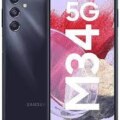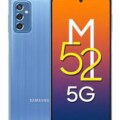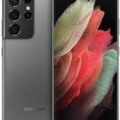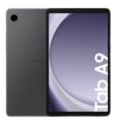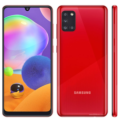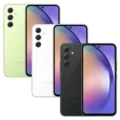- Home
- All Products
- Mobiles
- Apple iPhone XS Price & Specs
Apple iPhone XS Price & Specs
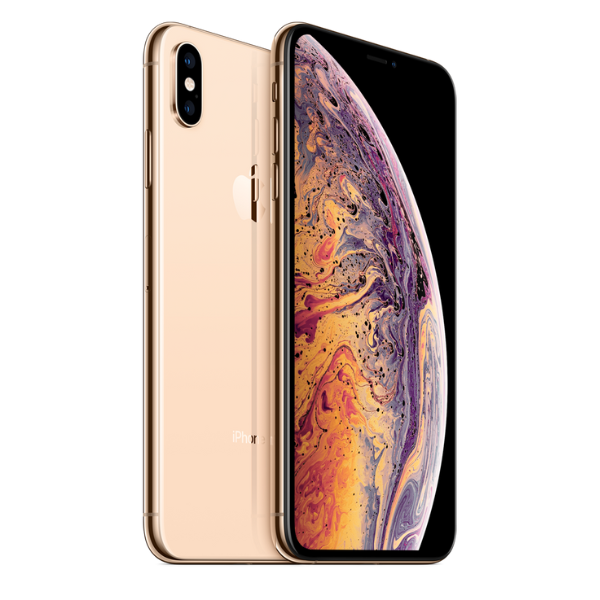

-
Processor: Apple A12 Bionic
-
RAM: RAM 4GB
-
Storage: 64 GB, 256 GB, 512 GB
-
Display: 5.8
-
Camera: 12MP
-
Battery: IOS 12
Specs
General
| Device Type | Smart Phone |
| Model | Apple iPhone XS |
| Announced | 21 September, 2025 |
| Released | 21 September, 2025 |
| Status | Available |
Network
| 2G Network |
SIM1: GSM 850 / 900 / 1800 / 1900 |
| 3G Network |
HSDPA 850 / 900 / 1900 / 2100 |
| 4G Network |
LTE |
| SIM <strong>SIM</strong> (Subscriber Identity Module) is a small card that contains mobile network subscriber's account information. This allows the phone using the card to attach to a mobile network. The SIM card is most commonly associated with GSM and UMTS mobile networks. Moving a SIM card from one phone to another allows a subscriber to switch mobile phones without having to contact their mobile network carrier. SIM cards can also be used by a phone to store limited amounts of data, such as phone numbers and text messages. | Nano SIM |
Design
| Type <strong>Design Type</strong> called form factor refers to a mobile phone's size, shape, and style as well as the layout and position of major components of phone. There are three major form factors seen in mobile phones => bar phones, folding phones and sliding phones. | Bar |
| Dimensions | 143.6 x 70.9 x 7.7 mm |
| Weight | 177 g |
| Colors |
Space Gray, Silver, Gold |
Display
| Display Type <strong>Display Technology => </strong> A number of display technologies and types used in mobile phones => TFT (Thin Film Transistor), IPS (In-Place Switching), OLED (Organic Light Emitting Diode), AMOLED (Active-Matrix Organic Light-Emitting Diode), Super AMOLED (an even advanced version of AMOLED), Resistive Touchscreen (Resistive touchscreens contain two layer of conductive material with a very small gap between them which acts as a resistance), Capacitive Touchsceen (Capacitive touchscreen technology consists of a layer of glass coated with a transparent conductor) | Super AMOLED capacitive touchscreen |
| Size | 5.8 Inches |
| Resolution | 1125 x 2436 Pixels |
| Display Colors <strong>Display Colors</strong> is refers to the number of different shades of colors that the screen is capable of displaying => 64K colors, 256K colors and 16 million colors, Obviously 16M is highest available range of colors and better than others. | 16M colors |
| Pixel Density <strong>Pixel Density (PPI)</strong> is refers to the concentration of pixels on a particular display, measured in pixels per inch (ppi). Pixel density is calculated by dividing the diagonal pixel resolution of a display by its diagonal size, higher pixel density better display quality. | 463 PP |
| Display Protection <strong>Display Protection => </strong> Gorilla Glass is a special alkali-aluminosilicate glass shield with exceptional damage resistance that helps protect mobile displays from scratches, drops, and bumps of everyday use, It is always better to go for a smartphone with Gorilla Glass for that added protection and peace of mind. | Scratch-resistant glass, oleophobic coating |
| Features |
Dolby Vision/HDR10 compliant, Wide color gamut display, 3D Touch display, True-tone display, 120 Hz touch-sensing |
Software
| Operating System <strong>OS => </strong> Every computer system run on a base software called Operating System (OS). Operating System controls all basic operations of the computer (such as smartphone, PDAs, tablet computers and other handheld devices). The Operating System allows the user to install and run third party applications (apps), apps are used to add new functionality to the device. | IOS 12 |
| User Interface <strong>UI</strong> or user interface of a device is the look and feel of the on-screen menu system. How it works, its color scheme, how it responds to button presses, all of these things are part of the user interface. | ios UI |
Hardware
| Chipset <strong>Chipset</strong> is a group of integrated circuits designed to perform one or a more dedicated functions, often with real time computing constraints, Popular smartphones are equipped with more advanced embedded chipsets that can do many different tasks depending on their programming. | Apple A12 Bionic (7 nm) |
| CPU <strong>CPU</strong> (Central Processing Unit) mostly known as processors, CPU processes instructions in order to carry out certain functions that make your device operate properly. Processors are often described as the brain of computers, smartphones and tablets, Smartphones and tablets rely on processors to carry out their every task, Processors are an incredibly important factor in selecting any type of computing device, including your smartphone. | Hexa-core (2x2.5 GHz Vortex + 4x1.6 GHz Tempest) |
| GPU <strong>GPU</strong> (Graphics Processing Unit) is a single-chip processor designed to rapidly manipulate and alter memory to accelerate the creation of images in a frame buffer intended for output to a display, This includes things such as lighting effects, object transformations, and 3D motion. | Apple GPU (4-core graphics) |
| RAM (Memory) <strong>RAM</strong> (Random Access Memory) is a type of computer memory that can be accessed randomly, any byte of memory can be accessed without touching the preceding bytes that allows information to be stored and accessed quickly from random locations. RAM is the most common type of memory found in computer systems, smartphones, tablets and other electronic devices. | 4 GB |
| Internal Storage <strong>Internal Storage</strong> is a data storage space (flash memory) mostly used in smartphones, tablets and other electronic devices where operating system, apps, music, photos, videos, files and other user data Is stored. | 64 GB, 256 GB, 512 GB |
| Card Slot <strong>Memory Card Slot</strong> is a special slot for inserting a memory card. Memory cards allow you to expand the phone's built-in memory, A memory card (sometimes called a flash memory card or a storage card) is a small storage medium used to store data such as text, pictures, audio, and video, for use on small, portable or remote computing devices such as mobile phones, mp3 players, digital cameras. | |
| Sensors <strong>Sensors</strong> are electronic components that detects and responds to some type of input from the physical environment. The specific input could be light, heat, motion, moisture, pressure and location, The output is generally a signal that is converted to use in computing systems, a location sensor, such as a GPS receiver is able to detect current location of your electronic device. |
Accelerometer, Barometer, Compass, Gyro, Proximity |
Camera
| Primary <strong>Camera</strong> is able to capture photographs and usually videos, The most important characteristics of a camera are the resolution (measured in megapixels), lens focus type (fixed or automatic), higher megapixel cameras are known to capture higher quality photos, but not always a good measurement of the photos quality. | Dual 12 MP, (f/1.8, 28mm, OIS, PDAF) + 12 MP, (f/2.4, 52mm, OIS, PDAF, 2x optical zoom) |
| Secondary | 7 MP, f/2.2, 32mm, HDR, Video (1080p@60fps) |
| Video | 4k |
| Camera Features |
Geo-tagging, touch focus, face/smile detection, HDR (photo/panorama), Video (2160p@24/30/60fps, 1080p@30/60/120/240fps, HDR, stereo sound rec) |
| Flash <strong>Flash Light => </strong> There is commonly two types of flash lights are used in camera mobile phones, LED Flash (LED flash offers lower power consumption with drive circuitry that takes up very little room, LEDs can be strobed faster than any other light source), Xenon Flash (xenon flash produces an extremely intense full-spectrum white light for a very short duration) |
Connectivity
| Wi-fi <strong>Wi-Fi</strong> is a popular wireless networking technology using radio waves to provide high-speed network connections that allows devices to communicate without cords or cables, Wi-Fi is increasingly becoming the preferred mode of internet connectivity all over the world. | Wi-Fi 802.11 a/b/g/n/ac, dual-band, Wi-Fi Direct, hotspot |
| Bluetooth <strong>Bluetooth</strong> is a wireless communications technology for exchanging data between mobile phones, headsets, computers and other network devices over short distances without wires, Bluetooth technology was primarily designed to support simple wireless networking of personal consumer devices. | v5.0 with A2DP, LE |
| GPS <strong>GPS</strong> The Global Positioning System is a satellite-based radio navigation system, GPS permits users to determine their position, velocity and the time 24 hours a day, in all weather, anywhere in the world, In order to locate your position, your device or GPS receiver must have a clear view of the sky. | Yes + A-GPS support & Glonass, BDS, GALILEO, QZSS |
| Wi-fi Hotspot | |
| USB | 2.0, proprietary reversible connector |
| NFC <strong>NFC</strong> (Near field communication) is a set of standards for smartphones and similar devices to establish peer-to-peer radio communications with each other by touching them together or bringing them into proximity, usually no more than a few inches. | |
| Wireless Charging <strong>Wireless Charging</strong> (Inductive Charging) uses an electromagnetic field to transfer energy between two objects. This is usually done with a charging station. Energy is sent through an inductive coupling to an electrical device, which can then use that energy to charge batteries or run the device. |
Data
| GPRS <strong>GPRS</strong> (General Packet Radio Service) is a packet oriented mobile data service on the 2G and 3G cellular communication system's global system for mobile communications (GSM), Generally, GPRS is used for the purpose of wireless data transfer, such as sharing pictures and videos or browsing the Internet via a mobile phone connection. | |
| EDGE <strong>EDGE</strong> (Enhanced Data GSM Environment) is a wireless network technology generally considered the next step in the 2G network offers data transfer rates up to four times faster than ordinary GSM networks, Generally, EDGE is used for the purpose of wireless data transfer, such as sharing pictures and videos or browsing the Internet via a mobile phone connection. | |
| Speed | GPRS, Edge, 3G (HSPA 42.2/5.76 Mbps), 4G (LTE-A (4CA) Cat16 1024/150 Mbps, EV-DO Rev.A 3.1 Mbps) |
Messaging
| SMS <strong>SMS</strong> (Short Messaging Service) is a text messaging service component of phone, Web, or mobile communication systems. It uses standardized communications protocols to allow mobile phone devices to exchange short text messages over the networks. | Yes |
| MMS <strong>MMS</strong> (Multimedia Messaging Service) is a standard way to send messages that include multimedia content (audio clips, video clips and images) to and from mobile phones over wireless networks using the WAP protocol. | |
| Email <strong>Email</strong> (Electronic Mail) is a system for receiving, sending, and storing electronic messages, Similar to a letter, email is text messages that may contain files, images, or other attachments sent via the internet to a recipient by using applications and software prograps. An email address is required to receive email, and that address is unique to the user. | |
| IM <strong>IM</strong> (Instant Messaging) is an exchange of text messages through a software application, it enable you to create a kind of private chat room with another individual in order to communicate in real time over the Internet. | Yes |
Media
| Audio Playback | |
| Video Playback | |
| FM Radio | |
| Loudspeaker | |
| Ring Tones | MP3, WAV |
| Alert Types | Vibration, ringtones |
| Handsfree | No |
Battery
| Battery Type <strong>Battery Type => </strong> Cell phones run on various kinds of batteries depending on the manufacturer, phone size or shape and features. There are basically four types of cell phone batteries => Lithium Polymer, Lithium Ion, Nickel Metal Hydride and Nickel Cadmium. | Li-Ion (Lithium Ion) |
| Capacity <strong>Battery Capacity</strong> is a measure (typically in Amp-hr) of the charge stored by the battery, and is determined by the mass of active material contained in the battery. The battery capacity represents the maximum amount of energy that can be extracted from the battery under certain conditions. | 2658 mAh |
| Placement | Fixed |
| Talk Time <strong>Talk Time</strong> is the longest time that a single battery charge will last when you are constantly talking on the phone under perfect conditions, Ambient temperature and highly dependent on the cellular network environment such as the distance to the closest cell network tower. | Up to 14 h |
| Music Play | Up to 60 h |
Apple unveiled the iPhone XS in September 2018. It has an A12 Bionic chip, a 5.8-inch Super Retina OLED display, two 12-megapixel rear cameras, a 7-megapixel front camera, and a total of four cameras. There are three storage options for the device: 64GB, 256GB, and 512GB. It has features like Face ID, wireless charging, and support for dual SIM cards and runs iOS 12. Space Gray, Silver, and Gold are the three colours that the iPhone XS is offered in.
Table of Contents
Design of iPhone XS
The Apple iPhone XS has a 5.8-inch Super Retina OLED display and is made entirely of glass and stainless steel. Wireless charging is made possible by the glass back, and the stainless steel band offers durability and a high-end appearance and feel. The TrueDepth camera system for facial recognition and other features is housed in a notch on the top of the front display. There are three color options for the device: silver, space grey, and gold. Overall, the design of the iPhone XS is sleek and modern, with a high-end look and feel.
Camera
The Apple iPhone XS has a 12-megapixel wide-angle lens and a 12-megapixel telephoto lens in its dual-camera system on the back. The rear cameras have a 2x optical zoom and optical image stabilization. Along with these features, the camera system has a quad-LED True Tone flash, a portrait mode with enhanced depth and bokeh controls, and Smart HDR for better photos in dimly lit and highly contrasted settings. The device has a 7-megapixel TrueDepth camera on the front with portrait mode, sophisticated depth and bokeh controls, and Face ID facial recognition technology. The iPhone XS camera system is fantastic all around, offering great photos and a variety of cutting-edge features for both the rear and front cameras.
Performance
Two high-performance cores and four high-efficiency cores make up the six-core Apple A12 Bionic chip, which powers the Apple iPhone XS. For better graphics performance, the A12 Bionic chip also has a four-core GPU. Fast and seamless multitasking is possible thanks to the device’s 4 GB of RAM. A fast and responsive device with excellent performance for both general use and demanding tasks like gaming and video editing is produced by the union of the potent A12 Bionic chip and the optimized iOS 12 operating system. The iPhone XS is one of the most potent smartphones available today and offers a high level of performance overall.
Storage
There are three storage capacities for the Apple iPhone XS: 64 GB, 256 GB, and 512 GB. Because the storage is not expandable, external devices like microSD cards cannot be used to add more storage. Your usage and storage requirements will determine the storage capacity you select. You might want to take the 256 GB or 512 GB options into consideration if you intend to store a lot of images, videos, songs, or other files on your device. However, the 64 GB option might be adequate if you intend to use your device primarily for everyday activities like calls, messaging, and browsing. Since you cannot later add more storage, it is crucial to select the storage option that best suits your needs.
Processor
The 64-bit Hexa-core A12 Bionic system-on-chip (SoC), created by Apple, powers the Apple iPhone XS. The A12 Bionic chip is constructed using a 7-nanometer process and has two high-performance cores and four high-efficiency cores. A four-core GPU and an eight-core Neural Engine, which offer sophisticated machine-learning capabilities, are also included in the A12 Bionic chip. In comparison to the A11 Bionic chip found in earlier-generation iPhones, the A12 Bionic chip offers up to 15% faster CPU performance and up to 50% faster graphics performance. Additionally, the A12 Bionic chip offers increased energy efficiency, extending battery life.
Connectivity & Networking
Numerous networking and connectivity options are supported by the Apple iPhone XS, including:
- Cellular connectivity: The device is capable of gigabit-class LTE for even faster download speeds, and it supports 4G LTE Advanced for quick data speeds. Additionally, the device supports a variety of LTE bands for cross-border connectivity.
- Wi-Fi: The system is compatible with Wi-Fi 802.11ac with MIMO, which offers faster data transfer rates and greater range than earlier Wi-Fi standards. Additionally, the device is capable of Wi-Fi calling and Wi-Fi hotspots.
- Bluetooth: The device is Bluetooth-enabled, and Bluetooth 5.0 offers faster data transfer and greater range than earlier Bluetooth versions. For better audio quality, the gadget also supports stereo Bluetooth.
- NFC: Contactless Apple Pay payments are made using the device’s NFC chip.
- GPS: The device includes built-in GLONASS, Galileo, QZSS, and GPS systems that offer precise location services.
- Lightning port: The device has a Lightning port that is used for charging, transferring data, and attaching accessories.
The iPhone XS offers a variety of networking and connectivity options that enable quick data transfer, worldwide connectivity, and precise location services.
Battery life of iPhone XS
A non-removable Li-Ion battery with a 2658 mAh capacity powers the Apple iPhone XS. According to Apple, the device can offer up to 12 hours of internet use, up to 14 hours of talk time, and up to 60 hours of audio playback on a single charge. The battery life can change based on usage and settings, including screen brightness, background app refresh, and location services. A separate fast-charging adapter is required to use the device’s fast charging feature, which can recharge the battery up to 50% in just 30 minutes. The device also supports wireless charging, which enables you to charge your device by setting it down on a wireless charging pad that is compatible with it. Overall, the iPhone XS has a good battery life, and it offers a variety of charging options so you can keep your device charged all day.
Apple iPhone XS Pros & Cons
| Pros | Cons |
|---|---|
| Advanced processor | Vaer expensive |
| High-quality camera | Portrait Mode is hit or miss |
| Great build quality, durability | Battery life could be better |
| New depth control for portraits | Lacks that one killer feature that would force an upgrade |
| Great speakers | Fast charging requires additional accessories |
iPhone XS price in Pakistan
Apple iPhone XS price in Pakistan is probably lower, though, as it is now an older model and has been replaced by several newer iPhone models like the iPhone xs max and iPhone 11 but the new iPhone XS price in Pakistan is around 141,999 Check websites like iShopping, OLX, or Daraz, to find the most recent iPhone XR prices in Pakistan. Remember that prices on these websites can vary, and you should always exercise caution when buying from individual sellers.
Apple iPhone XS different City Prices in Pakistan
| City | Price |
|---|---|
| Price in Islamabad | Rs 141,999/- |
| Price in Lahore | Rs 141,999/- |
| Price in Karachi | Rs 141,999/- |
| Price in Peshawar | Rs 141,999/- |
| Price in Quetta | Rs 141,999/- |
| Price in Faisalabad | Rs 141,999/- |
Conclusion
The Apple iPhone XS is a strong, premium product with slashing features like a quick processor, high-quality camera, water and dust resistance, facial recognition, wireless charging, and a variety of connectivity options. The device does, however, have some restrictions and drawbacks, including its high price, constrained storage, absence of a headphone jack, fragile design, and lack of a fast charger. Overall, the iPhone XS is a fantastic option for those who value performance and cutting-edge features, but due to its high price and some restrictions, it might not be the best choice for everyone.
FAQ
What is the Release Date of Apple iPhone XS?
The release date of iphone XS is 2018, September 21.
Is iPhone XS waterproof?
iPhone XS and iPhone XS Max both boast IP68 water and dust resistance, it doesn’t mean they’re waterproof.
Is iPhone XS dual sim?
Both the iPhone XS and the iPhone XS Max will offer the dual SIM card option
Is iPhone XS 5G?
No, iPhone XS doesn’t support 5G.
Does iPhone XS support fast charging?
Yes, You can fast charge your iPhone 8 and later up to 50 percent battery in around 30 minutes.
Disclaimer: The Apple iPhone XS prices listed on this page are sourced from local shops and dealers and are updated daily. While we strive for accuracy, we cannot guarantee that the price information of the Apple iPhone XS provided on this page is 100% correct, as human error is possible. We recommend that you visit your local shop for exact pricing information. Thank you for your understanding.



